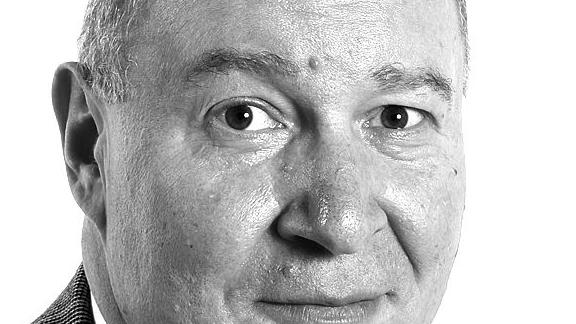
Every professional sports team should have the stadium it covets, even if it includes tiers of luxury boxes and five-star restaurants on every concourse.
And every professional sports team should pay the cost of its stadium with no assistance from the public.
A far different, more unequal system is at play.
Stadiums are America's longest-running, most ubiquitous legal racket. A few architects, contractors and team owners get wealthier as publicly subsidized ballparks and arenas rise in one town or metropolis after another.
Corporate welfare is marvelous for the beneficiaries, many of whom are already millionaires. It's a bad deal for the family or pensioner who helped pay for a stadium but can't afford the price of admission to see a game.
Albuquerque, where murders have reached a record high with more than four months remaining in the year, is the latest city to begin debate on a stadium.
Its City Council recently voted 7-2 to ask voters in the November election whether they favor a $50 million bond issue to build a downtown soccer stadium. The primary tenant would be New Mexico United, a pro team.
The Albuquerque Journal carried a story with a funny description of the bond issue, but the humor wasn't by design.
The Journal’s rambling paragraph read: "If voters approve it, the city would borrow $50 million and have at least enough money to build what Albuquerque Chief Operating Officer Lawrence Rael called a 'bare bones' stadium, though the idea is to find additional money — perhaps from the New Mexico Legislature — to pay for something better."
Don't you love it when reporters or bureaucrats in one government talk about finding money from another government? You could get the idea state money doesn't come from taxpayers but from the benevolent Legislature. Perhaps vast sums can be pulled from beneath the sofa cushions in the legislators' lounges or from conifers on the Capitol grounds.
It's no fiesta when New Mexico's biggest city is floating a trial balloon about squeezing taxpayers statewide to pay for a stadium. Motel workers in Tucumcari, retirees in Deming and teachers in Gallup might not be thrilled with the idea of their taxes helping finance a stadium in Albuquerque.
Outside of the construction phase, which ends in a year or two, stadiums don't create many good jobs. Most of the work pays little and is part time or seasonal — ticket-takers, grounds crews, people staffing concession stands.
Politicians who favor the soccer stadium say it will generate business for bars, restaurants and hotels. This, too, is seasonal, and only a small segment of the hospitality industry benefits. A restaurant five or 10 blocks from the stadium might not see any bump in business.
Across the years, I covered or edited the coverage of stadium proposals for my old newspapers in Denver and Pittsburgh.
The pitch in Denver was high and hard. Major League Baseball would not locate a team in the city unless voters approved a special sales tax to build a ballpark.
Voters did as they were instructed, and the Colorado Rockies were born. Then the Denver Broncos wanted a new football stadium. Team owners described glorious old Mile High Stadium as economically obsolete. The Broncos also got their way.
The Colorado Avalanche came to Denver soon after the Rockies, giving the city a National Hockey League team. At least the Avalanche could share an arena with the NBA's Denver Nuggets. Public financing contributed to their new building, too.
When I went to work at the Pittsburgh Post-Gazette, the Steelers and Pirates shared Three Rivers Stadium. Publicly financed, it had been hailed as an innovative, multipurpose building that would satisfy football and baseball fans for generations. Too bad it didn't keep team owners happy.
Philadelphia and Cincinnati also housed their pro football and big-league baseball teams in one stadium. After about 20 years, all six teams in the three cities demanded a better deal, meaning new stadiums for every franchise.
Boosters of the Pirates said the club would have to leave Pittsburgh after a century unless they got a ballpark of their own. Three Rivers Stadium wasn't intimate enough for baseball. The Pirates couldn't draw in a concrete bowl. It didn't have capacity for more "points of sale" for food and team merchandise.
Steelers executive Art Rooney II told me a similar story. His grandfather had founded the team in 1933. The Steelers were in a tough spot because rival teams were getting new stadiums. They wouldn't be able to compete unless they received public assistance for a new building.
Voters in western Pennsylvania rejected a special sales tax for stadiums the two Pittsburgh teams said were essential. Defeated but confident, the teams and their trusted politicians began arm-twisting at the state Capitol in Harrisburg.
The Pirates and Steelers each got a new stadium. So did the Philadelphia Eagles and the Philadelphia Phillies. Four stadiums created a construction bonanza.
My digging into stadium history in Pittsburgh turned up a surprising statistic.
Three Rivers Stadium opened in 1970 at a construction cost of $35 million. The debt was supposed to be paid off in 30 years. But in 1997, debt on Three Rivers Stadium had increased to $41.4 million.
Original construction costs and ensuing improvements accounted for $22.8 million of the debt. Another $15.4 million in city loans to help the Pirates survive were loaded onto the stadium debt. And $3.1 million went for a modern scoreboard.
The stadium racket is serious business. What's a ballpark unless the scoreboard can shoot off fireworks?
"want" - Google News
August 22, 2021 at 07:00AM
https://ift.tt/3kdngd9
Watch your wallet: Albuquerque politicians want new stadium - Santa Fe New Mexican
"want" - Google News
https://ift.tt/31yeVa2
https://ift.tt/2YsHiXz
Bagikan Berita Ini















0 Response to "Watch your wallet: Albuquerque politicians want new stadium - Santa Fe New Mexican"
Post a Comment